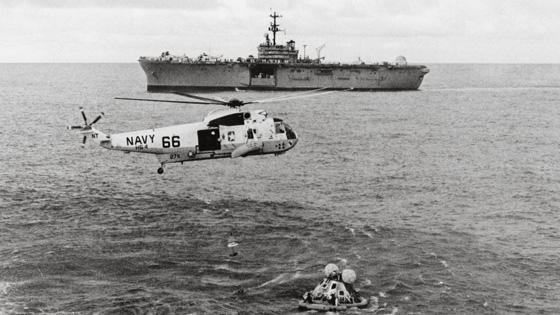
When the Apollo 13 mission lifted off on April 11th 1970, nobody on board, nor on the ground, could ever have anticipated the drama and near disaster that lay ahead.
The crew, commanded by veteran astronaut Jim Lovell, was destined for the moon. This was to be the third ever human lunar landing, and the next successful chapter of the Apollo project. Together with Command Module Pilot Jack Swigert, and Lunar Module Pilot, Fred Haise, the three astronauts were each equipped with Omega Speedmaster Professional chronographs – part of NASA’s official kit for all manned missions since 1965.
Indeed, a major problem did occur for Apollo 13 just two days after launch. When an oxygen tank exploded on board, it crippled the Service Module and plunged the astronauts into a truly perilous situation. The mission to the moon was abandoned. Now, it was simply about getting the crew home safely. Because the mission had drifted off course by roughly 60 to 80 nautical miles, it meant that the module would re-enter Earth’s atmosphere at the wrong angle, and bounce back into space with no chance of recovery.
Therefore, to manually readjust the course of the craft, an exact 14-second burn of fuel was required. There was simply no room for error. Without their digital timers, Swigert instead used his Omega Speedmaster chronograph to time the burn, while Lovell guided the craft using the Earth’s horizon as his guide. As Mission Commander James Lovell would later say, “We used the watch that Jack had on his wrist and I had to control the spacecraft. Jack timed the burn on the engine to make that correction to get us back home safely.”
To huge relief, the unique manoeuvre worked perfectly, and finally, on April 17th, 142 hours and 54 minutes after launch, Apollo 13 splashed down safely in the South Pacific Ocean. The watch had played its part, and performed exactly as intended.
April 23, 2020


 News
News